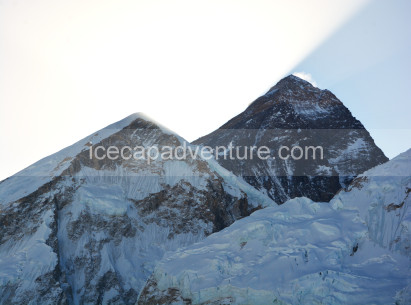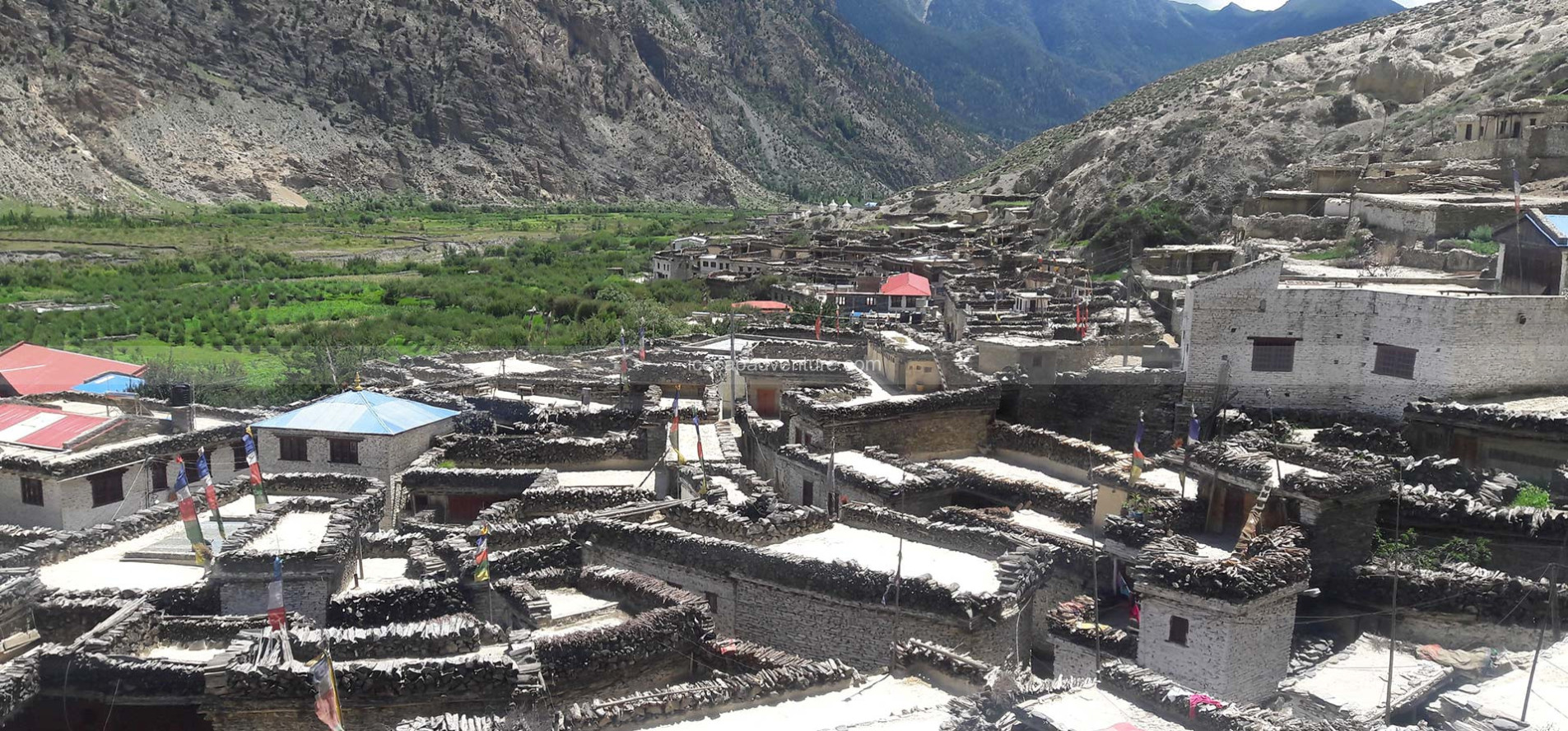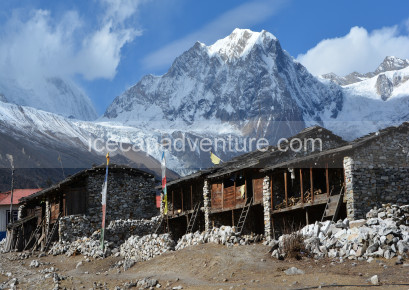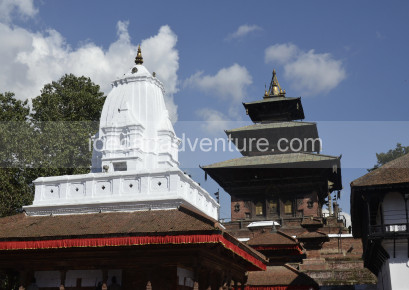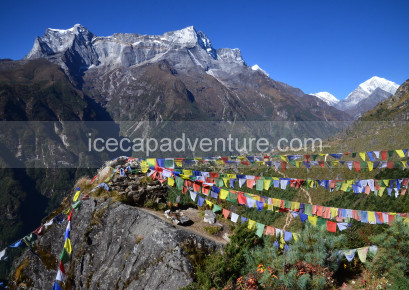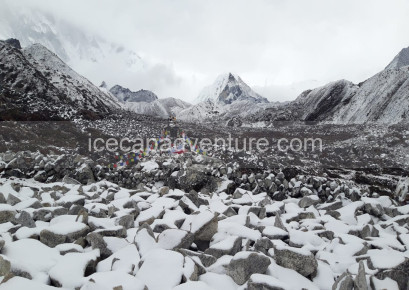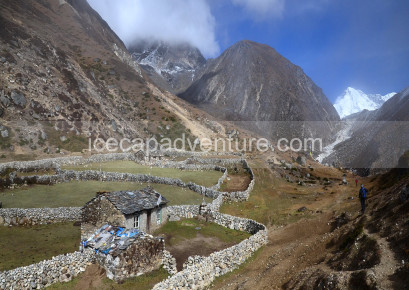.png)
.png)
.png)
.png)
.png)
.png)
.png)
.png)
Embarking on the Mystical Nar Phu Valley Trek
-
Discovering the Forbidden Gem
Embark on an enthralling adventure through the lesser-known trails of Nepal with the Nar Phu Valley Trek, a journey that unfolds the secrets of a once-military-restricted region. Opened to trekkers in 2003 AD, this trek offers an unparalleled experience for those seeking both adventure and cultural immersion.
Starting the Nar Phu Valley Trekking Odyssey
Begin your expedition from Besi Shahar, nestled in the Lamjung district, and ascend towards Chame, the gateway to the Nar Phu Valley. Marvel at the panoramic views of the Annapurna and Dhaulagiri massifs, each peak soaring above 7,000m and 8,000m, creating a majestic backdrop for your journey.
Encountering Himalayan Traditions
Experience the heart of Himalayan culture as you traverse through remote villages, witness yak caravans transporting goods, and explore ancient Gompas. The Nar Phu Valley Trek is not just about landscapes; it’s a cultural odyssey, revealing the unique traditions that have thrived in isolation.
Challenges and Triumphs
Test your mettle as you conquer the challenging Kang La Pass at 5,100m and the formidable Thorong Pass Trek at an impressive 5,416m. These high passes offer not only physical challenges but also unveil unparalleled panoramic views of the surrounding Himalayan peaks.
Natural Wonders: Tilicho Lake and Beyond
-
Exploring Himalayan Splendours
Marvel at the natural wonders along the way, from the stunning Tilicho Lake to the Annapurna Massif, the Manaslu range, and the iconic Pisang Peak. Spot elusive wildlife such as snow leopards, blue sheep, mountain goats, and the resilient yak against the backdrop of these awe-inspiring landscapes.
Tailored for All: Fitness Levels and Customizable Itineraries
-
Inclusivity in Adventure
Suitable for trekkers of varying fitness levels, Nar Phu Valley Trek accommodates those with limited time, offering customizable itineraries. Extend your adventure with activities like rafting on the Seti River or a Jungle safari in Chitwan.
Optimal Seasons and Winter Considerations
-
Choosing the Right Time
Opt for the prime trekking seasons of autumn, specifically October and November, as well as spring, encompassing April and May. During these periods, you can anticipate favourable weather conditions and enhanced visibility, ensuring an optimal trekking experience. However, it’s crucial to note that winter treks remain feasible, albeit with a caveat. Exercise caution and mindfulness due to the potential snowfall, which introduces an additional layer of challenge to your expedition.
Culmination of the Journey
Immerse yourself in the allure of the Nar Phu Valley, where every step is a revelation. This trek isn’t just a physical challenge; it’s an invitation to unravel the mysteries of a hidden village and forge a profound connection with the soul-stirring landscapes of the Himalayas.
Trip Highlights:
-
Nar Phu Buddhism community and society.
-
Kang La Pass and the Annapurna Himalayan Range.
-
Thorong La pass and Muktinath.
-
The trail goes through fine mountain villages & lush forests.
-
Lower Mustang area 1
1
We will be waiting to welcome you at Tribhuvan International Airport, Kathmandu, where you will be greeted with a traditional Nepali flower garland to mark your arrival. After the warm welcome, we will drive you to your hotel, approximately 30 minutes during the day and 20 minutes at night.
Upon reaching the hotel, you will be offered welcome drinks and biscuits, followed by the settlement of your rooms. Once settled, please join us back in the lobby or meeting hall for a briefing about your trekking and tour program on the Nar-Phu Valley Trek, including an introduction to your trekking guide and other relevant details. After the briefing, you will have the opportunity to check your trekking equipment with your guide.
Note: If you arrive in Kathmandu at night, these activities will be scheduled for the following day after breakfast and meals.
.png)
.png)
.png)
.png)
2
After breakfast at the hotel, you will have time to explore Kathmandu’s cultural heritage sites, such as Kathmandu Durbar Square, Swayambhunath (Monkey Temple), or Boudhanath Stupa, and you will have the day to prepare for your trek.
Our team will assist you in checking your gear and ensuring you have all the necessary equipment for the journey ahead. If you need to buy or rent any trekking gear, we will guide you to the best shops in Thamel, where you can find quality items at reasonable prices.
In the evening, your trekking guide will conduct a final briefing about the trek, including route details, safety measures, and expected weather conditions. Overnight stay at a hotel in Kathmandu.
.png)
.png)
.png)
.png)
3
Start your journey early in the morning with a scenic drive from Kathmandu to Koto, a long but rewarding trip of approximately 9 to 10 hours. The route follows winding highways and mountain roads, passing through lush green valleys, terraced fields, and small rural towns, gradually ascending to 2,610 meters. Along the way, you’ll be treated to views of cascading rivers, waterfalls, and the surrounding Himalayan foothills. The drive is moderately challenging due to its duration and occasional bumpy stretches, but it offers a wonderful mix of cultural encounters and natural beauty. Upon reaching Koto, a traditional Gurung settlement at the gateway to the Nar Phu Valley, check into a cozy teahouse or lodge and enjoy a warm dinner in the tranquil mountain setting. Meals include breakfast in Kathmandu, a lunch stop en route, and a hearty dinner at your accommodation.
Highlights of the Day:
-
Scenic full-day drive through valleys, terraced fields, and riverside roads
-
Cultural glimpses of rural Nepalese towns and villages
-
Stunning views of Himalayan foothills and cascading waterfalls
-
Arrival in Koto, gateway to Nar Phu Valley, with rich Gurung culture
.png)
.png)
.png)
.png)
4
After breakfast in Koto, begin your journey to Meta, a scenic yet adventurous drive and trek combination taking around 5 to 6 hours, ascending to 3,560 meters. The route enters the remote Nar Phu Valley, passing through dense pine forests, cascading waterfalls, and suspension bridges over the roaring Nar Khola River. The trail gradually climbs uphill, offering glimpses of snow-capped peaks and rugged cliffs while providing cultural encounters with traditional Tibetan-influenced villages. The journey is moderately challenging due to the ascent and high-altitude conditions but rewards travelers with stunning Himalayan scenery and the unique charm of Meta, a windswept village surrounded by towering mountains. Upon arrival, check into a simple teahouse or lodge and enjoy a warm, nourishing dinner. Meals include breakfast in Koto, a packed or local lunch on the way, and dinner at your accommodation.
Highlights of the Day:
-
Scenic journey into the remote Nar Phu Valley
-
Crossing suspension bridges over the Nar Khola River
-
Views of pine forests, waterfalls, cliffs, and snow-capped peaks
-
Cultural encounters with Tibetan-influenced villages
-
Arrival in Meta, a traditional highland village with panoramic mountain views
.png)
.png)
.png)
.png)
5
After breakfast in Meta, continue your adventure with a steady ascent to Phu Village, a hidden gem of the Nar Phu Valley, taking approximately 4 to 5 hours. The route traverses arid highland landscapes, rocky ridges, and narrow trails carved into cliffs, while offering breathtaking views of Himlung Himal, Kang Guru, and other snow-capped peaks. Along the way, you’ll pass through colorful Tibetan Buddhist chortens, mani walls, and remote settlements that reflect centuries-old Himalayan traditions. The climb is moderately challenging due to the high altitude, but the reward is reaching Phu Village at 4,250 meters, a traditional fortress-style village with stone houses perched dramatically on a hillside. Upon arrival, check into a basic teahouse or lodge and enjoy a hearty dinner surrounded by pristine mountain wilderness. Meals include breakfast in Meta, a packed or local lunch en route, and dinner at your accommodation.
Highlights of the Day:
-
Journey through rugged cliffs, ridges, and arid Himalayan landscapes
-
Spectacular views of Himlung Himal and Kang Guru peaks
-
Encounters with Tibetan Buddhist chortens, mani walls, and remote villages
-
Arrival at the traditional fortress-style Phu Village at 4,250 meters
-
Unique cultural immersion in one of Nepal’s most secluded valleys
.png)
.png)
.png)
.png)
6
Spend the day exploring the fascinating Phu Village and its surroundings while allowing your body to acclimatize to the high altitude of 4,250 meters. After breakfast, set out on short excursions around the village, including a visit to the ancient Tashi Lhakhang Monastery, a culturally significant site said to be blessed by the great Tibetan Buddhist saint, Lama Karma Sonam Rinpoche. Wander through the narrow stone-paved streets of the fortress-like village, where traditional stone houses, prayer flags, and chortens reflect centuries-old Tibetan heritage. Optional hikes to nearby viewpoints provide sweeping panoramas of Himlung Himal, Kang Guru, and other peaks surrounding the valley. This is also a perfect opportunity to interact with the local people, learn about their traditional lifestyle, and experience the unique culture of one of Nepal’s most remote regions. Meals include breakfast, lunch, and dinner at your teahouse.
Highlights of the Day:
-
Acclimatization day at 4,250 meters for better high-altitude adjustment
-
Visit to Tashi Lhakhang Monastery, an important Buddhist heritage site
-
Exploration of Phu Village’s fortress-style architecture and narrow alleys
-
Optional hikes to scenic viewpoints overlooking Himlung Himal and Kang Guru
-
Cultural immersion and interaction with local villagers
.png)
.png)
.png)
.png)
7
After breakfast in Phu Village, set out for Nar Village, a scenic journey of about 3 to 4 hours, gradually descending and then ascending across rugged highland terrain. The route passes through alpine pastures, mani walls, and Buddhist chortens, with stunning views of Pisang Peak and Kang Guru along the way. The walk is moderately challenging due to the altitude and uneven trails but offers rewarding cultural encounters with the traditional Tibetan-influenced lifestyle of the region. Nar Village, located at 4,150 meters, is larger and livelier than Phu, with stone-built houses clustered together and surrounded by terraced fields. Upon arrival, check into a teahouse or lodge, enjoy a warm dinner, and take in the vibrant yet tranquil atmosphere of this remote Himalayan settlement. Meals include breakfast in Phu, a simple or packed lunch on the way, and dinner at your accommodation.
Highlights of the Day:
-
Scenic journey across alpine pastures, mani walls, and chortens
-
Panoramic views of Pisang Peak and Kang Guru
-
Moderate adventure on rugged high-altitude trails
-
Arrival at Nar Village, known for its traditional stone houses and terraced fields
-
Cultural immersion in one of the most authentic Himalayan settlements
.png)
.png)
.png)
.png)
8
Begin your day early with a nourishing breakfast in Nar Village before setting out on one of the most challenging yet rewarding sections of the trek. The trail ascends steadily toward Kang La Pass (5,306 meters), taking several hours of steep climbing across rocky terrain and alpine landscapes. Reaching the top of the pass rewards trekkers with breathtaking 360-degree views of the Annapurna range, Dhaulagiri, Lamjung Himal, and countless snow-capped peaks. After enjoying the incredible panoramas, descend along a long and sometimes steep trail toward Ngawal at 3,660 meters, which takes another 4 to 5 hours. The descent offers changing scenery, from barren highlands to green meadows and cultivated terraces. By late afternoon, arrive in Ngawal, a traditional Manangi village, where you can check into a teahouse or lodge and enjoy a well-deserved dinner. Meals include breakfast in Nar, a packed lunch during the trek, and dinner at your accommodation.
Highlights of the Day:
-
Challenging ascent to Kang La Pass at 5,306 meters
-
Panoramic views of the Annapurna and Dhaulagiri ranges
-
Crossing one of the most dramatic high mountain passes in Nepal
-
Long descent through alpine meadows and terraced fields
-
Arrival in Ngawal, a traditional Manangi village with cultural charm
.png)
.png)
.png)
.png)
9
After breakfast in Ngawal, set out on a short yet scenic journey to Manang, taking around 3 to 4 hours while descending gradually to 3,400 meters. The trail winds through terraced fields, alpine pastures, and small settlements, offering captivating views of Annapurna II, Annapurna III, and Gangapurna. This section of the trek is relatively easy compared to previous days, making it a comfortable transition back onto the main Annapurna Circuit route. Upon arrival in Manang, a lively Himalayan town, check into a cozy teahouse or lodge where you can enjoy a warm meal and relax. The afternoon can be spent exploring Manang’s vibrant streets, visiting monasteries, or enjoying a short acclimatization hike to nearby viewpoints. Meals include breakfast in Ngawal, a light or packed lunch on the way, and dinner at your accommodation.
Highlights of the Day:
-
Gradual descent through terraced fields and alpine landscapes
-
Stunning views of Annapurna II, Annapurna III, and Gangapurna
-
Short and comfortable trekking day with plenty of time to relax
-
Arrival in Manang, a bustling Himalayan hub with cultural sites and amenities
-
Optional afternoon exploration or acclimatization hike
.png)
.png)
.png)
.png)
10
After breakfast in Manang, begin your gradual ascent to Ledar, a highland settlement at 4,050 meters, taking around 3 to 4 hours. The trail climbs gently out of the Marshyangdi Valley, crossing alpine pastures and scrublands with fewer trees as the altitude increases. Along the way, enjoy breathtaking views of Annapurna II, Annapurna IV, Gangapurna, and Tilicho Peak. You may also spot blue sheep grazing on the rugged slopes. The trek is moderately challenging due to the higher altitude, but it offers steady pacing and ample time for acclimatization. Upon arrival in Ledar, check into a basic teahouse or lodge, enjoy a hearty dinner, and rest in preparation for the higher climbs ahead. Meals include breakfast in Manang, a simple or packed lunch en route, and dinner at your accommodation.
Highlights of the Day:
-
Gradual ascent through alpine pastures and highland landscapes
-
Panoramic views of Annapurna II, IV, Gangapurna, and Tilicho Peak
-
Chance to spot Himalayan wildlife such as blue sheep
-
Steady pacing ideal for acclimatization before higher passes
-
Arrival in Ledar, a small settlement at 4,050 meters
.png)
.png)
.png)
.png)
11
After breakfast in Ledar, continue your gradual ascent toward High Camp at 4,800 meters, a shorter but demanding trek of about 2 to 3 hours. The trail climbs steadily through rocky terrain, crossing suspension bridges and traversing steep sections with loose scree, all while offering sweeping views of Annapurna, Gangapurna, and Thorong Peak. Due to the high altitude, the walk feels more strenuous despite the shorter distance, making slow pacing and hydration essential. High Camp serves as the last overnight stop before the Thorong La Pass, and it provides basic teahouse accommodation for acclimatization and rest. Meals include breakfast in Ledar, a light or packed lunch en route, and a warm dinner at your teahouse.
Highlights of the Day:
-
Short yet steep ascent through rocky and rugged highland terrain
-
Stunning views of Annapurna, Gangapurna, and Thorong Peak
-
Experience walking in a stark, high-altitude Himalayan environment
-
Essential acclimatization stop before crossing Thorong La Pass
-
Arrival at High Camp, the final resting point before the big climb
.png)
.png)
.png)
.png)
12
Today is the most challenging yet rewarding day of the trek. Starting early from High Camp, ascend steadily for about 3 to 4 hours to reach the legendary Thorong La Pass (5,416 meters), the highest point of the Annapurna Circuit. The climb is demanding due to steep trails, thin air, and unpredictable weather, but reaching the summit is an unforgettable experience. From the top of the pass, enjoy breathtaking panoramic views of the Annapurna range, Dhaulagiri, Thorong Peak, and the Kali Gandaki Valley. After celebrating the achievement, begin a long and steep descent of 4 to 5 hours toward Muktinath at 3,760 meters. The descent can be tough on the knees, but the changing scenery—from barren alpine landscapes to the spiritual and cultural setting of Muktinath—makes it worthwhile. Upon arrival, check into a teahouse or lodge, enjoy a hearty dinner, and rest after this epic day. Meals include an early breakfast at High Camp, a packed or simple lunch en route, and dinner in Muktinath.
Highlights of the Day:
-
Challenging ascent to Thorong La Pass (5,416m), the highest point of the trek
-
Panoramic Himalayan views of Annapurna, Dhaulagiri, and Thorong Peak
-
Long and rewarding descent to the sacred pilgrimage site of Muktinath
-
Walking through varied landscapes from alpine deserts to cultural valleys
-
A sense of achievement crossing one of the world’s highest trekking passes
.png)
.png)
.png)
.png)
13
After breakfast in Muktinath, begin your scenic descent to Jomsom at 2,750 meters, a journey of approximately 5 to 6 hours. The route follows the dramatic Kali Gandaki Valley, famous for being one of the deepest gorges in the world, and passes through terraced fields, dry highland landscapes, and traditional Tibetan-style villages. The trail or jeep/drive is moderately easy, offering a comfortable and gradual descent while still providing spectacular views of Dhaulagiri, Nilgiri, and other Himalayan peaks. Upon arrival in Jomsom, a bustling market town, check into a teahouse or lodge, relax, and enjoy a warm dinner. Meals include breakfast in Muktinath, lunch en route, and dinner at your accommodation.
Highlights of the Day:
-
Scenic descent through the Kali Gandaki Valley, one of the world’s deepest gorges
-
Panoramic views of Dhaulagiri, Nilgiri, and surrounding peaks
-
Passage through traditional Tibetan-style villages
-
Moderate trekking or drive with breathtaking Himalayan scenery
-
Arrival in Jomsom, a vibrant gateway town to western Nepal
.png)
.png)
.png)
.png)
14
After breakfast in Jomsom, take a scenic 30-minute flight to Pokhara, descending from 2,750 meters to 820 meters. The flight provides breathtaking aerial views of the Annapurna and Dhaulagiri ranges, the deep Kali Gandaki Valley, and the terraced farmlands of western Nepal. This is a comfortable and effortless way to conclude your high-altitude trekking adventure. Upon arrival in Pokhara, transfer to your hotel or guesthouse, where you can relax and explore the serene lakeside city. Optional activities include visiting Phewa Lake, exploring local markets, or enjoying lakeside cafes. Meals include breakfast before departure, and lunch and dinner at your accommodation in Pokhara.
Highlights of the Day:
-
Scenic 30-minute flight over the Annapurna and Dhaulagiri ranges
-
Stunning views of the Kali Gandaki Valley and surrounding landscapes
-
Comfortable descent from high altitude to the Pokhara valley
-
Arrival in Pokhara with leisure time for sightseeing and relaxation
.png)
.png)
.png)
.png)
15
After breakfast in Pokhara, board a scenic 30-minute flight to Kathmandu, ascending from 820 meters to 1,350 meters. The flight offers spectacular aerial views of the Annapurna and Dhaulagiri ranges, lush valleys, and the rolling hills of central Nepal, providing a comfortable and stress-free end to your Himalayan adventure. Upon arrival at Tribhuvan International Airport in Kathmandu, transfer to your hotel or guesthouse for relaxation or optional sightseeing in the city. Meals include breakfast before departure, with lunch and dinner available at your accommodation or during travel arrangements.
Highlights of the Day:
-
Short scenic flight from Pokhara to Kathmandu with Himalayan vistas
-
Panoramic aerial views of Annapurna and Dhaulagiri ranges
-
Comfortable transfer from lowland Pokhara to Kathmandu valley
-
Arrival in Kathmandu with time for relaxation or city exploration
.png)
.png)
.png)
.png)
16
After breakfast at your hotel in Kathmandu, you will be transferred to Tribhuvan International Airport for your onward journey. Depending on your flight schedule, you may have time to enjoy a last stroll through the city, visit local markets, or take a quick sightseeing trip to nearby cultural landmarks. This marks the conclusion of your unforgettable Himalayan adventure, leaving you with lasting memories of Nepal’s stunning landscapes, rich culture, and warm hospitality. Meals include breakfast at the hotel, with lunch and dinner typically available during travel or at the airport.
Highlights of the Day:
-
Transfer to Tribhuvan International Airport for departure
-
Optional last-minute sightseeing or shopping in Kathmandu
-
Farewell to Nepal’s mountains, culture, and people
.png)
.png)

Didn’t find what you were looking for?
So why not plan your own trip. It takes only 2 minutes.- Airport Pick up and transfers to hotel.
- All accommodation in Kathmandu, Pokhara and Trekking
- Full board meals during the trekking such as : Breakfast, Lunch and Dinner
- Properly 3 times tea and coffee whatever hot drinks are available
- Full support crew with 1 porter for every 2 trekkers
- Experience professional guide and porter
- Full insurance for guide and porter.
- Domestic flight tickets from Jomsom to Pokhara to Kathmandu
- National park entry fee and TIMS card or trekking permit whatever necessaries
- All transportation with AC luxuries deluxe from the starting to ending points of the trip
- Down Sleeping bag (-20), Must be returned after completion the trek
- Trekking Map and Notebook
- First Aid Kit for staff.
- Trekking achievement certificate after completed the Treks.
- International flight tickets, Travel insurance and Nepal entry visa fees.
- International flight tickets, Travel insurance and Nepal entry visa fees.
- All hard drinks such as : Mineral water, whisky, rum, cola, fanta, etc
- Extra entrance fees such as Museum, Monastry, Temple, Boating, etc
- Personal equipment
- Personal expenses like hot shower and battery charge / wifi charge.
- Extra night hotel in Kathmandu if arriving late or early departure scheduled itinerary
- Any emergency rescue evacuation and extra cost offering from unfavorable circumstance such as weather bad.
- Personal tips for trekking staff.

✅ Clothing
-
Base Layers (Thermal Tops & Bottoms)
-
Trekking Shirts (Long & Short Sleeves)
-
Fleece Jacket / Warm Mid-layer – For insulation.
-
Down Jacket – Essential for nights above 3,500m.
-
Waterproof & Windproof Jacket (with hood).
-
Trekking Pants (lightweight, quick-drying).
-
Warm Trekking Pants (for high altitude).
-
Waterproof Pants (for rain/snow).
-
Underwear – Comfortable, quick-dry.
-
Sports Bras (for women).
✅ Head & Hand Wear
-
Warm Hat / Beanie and Sun Hat / Cap.
-
Buff / Neck Gaiter / Scarf.
-
Sunglasses and Gloves 2 pairs
✅ Footwear
-
Trekking Boots – Sturdy, waterproof, broken-in.
-
Lightweight Shoes / Sandals – For camp/teahouse.
-
Warm Trekking Socks – At least 4–5 pairs.
✅ Sleeping & Bags
-
Sleeping Bag (Down -15°C) and Liner.
-
Duffel Bag (carried by porter).
-
Daypack (30–40L) – For personal items.
-
Rain Cover for Backpack.
✅ Trekking Gear
-
Trekking Poles & Gaiters – For snow or muddy.
-
Headlamp (with extra batteries).
-
Water Bottles (2–3 liters) and Water Purifications.
-
Personal First Aid Kit
-
Snacks / Energy Bars / Dry Fruits.
✅ Accessories & Personal Items
-
Sunscreen (SPF 30–50) and Lip Balm with SPF.
-
Toiletries and Hand Sanitizer.
-
Towel (quick-dry) and Toilet Paper
-
Camera / Power Bank / Solar Charger.
✅ Documents & Money
-
Valid Passport and Visa.
-
Travel Insurance (cover high-altitude & helicopter rescue).
-
Cash (Nepali Rupees) – For personal expenses.
Good to Know – Nar-Phu Valley Trekking
-
Best Seasons to Trek: The best time is spring (March–May) and autumn (September–November) when skies are clear, weather is stable, and trails are at their best. Winter brings heavy snow at passes, while monsoon makes trails slippery.
-
Altitude Awareness: The trek reaches up to 5,320 meters at Kang La Pass, making altitude sickness a real concern. Slow ascent, acclimatization days, and proper hydration are crucial.
-
Physical Fitness: A moderate to challenging trek, requiring 6–8 hours of walking per day with steep climbs and rugged terrain. Good endurance and prior trekking experience are recommended.
-
Permits Required: Trekkers need a Restricted Area Permit (RAP) for Nar-Phu Valley, along with the Annapurna Conservation Area Permit (ACAP) and a TIMS card. These can be arranged in Kathmandu through a registered trekking agency.
-
Accommodations and Meals: Tea houses and lodges provide basic rooms and meals. Expect dal bhat, noodles, soups, and limited Western food. Facilities are simple in remote villages.
-
Drinking Water: Bottled water is available but expensive in higher regions. Carry a water filter or purification tablets for safe and eco-friendly refills.
-
Packing & Gear: Essential items include layered warm clothing, waterproof jacket, sturdy trekking boots, sleeping bag, walking poles, gloves, hat, sunscreen, sunglasses, and a first-aid kit. Be prepared for cold and windy conditions at high passes.
-
Transportation: The trek usually starts with a drive from Kathmandu to Koto (via Besisahar/Chame). Roads are long and bumpy but scenic.
-
Connectivity: Mobile network coverage is limited, especially in Nar and Phu villages. Some lodges may provide paid Wi-Fi, but connections are unreliable.
-
Travel Insurance: Comprehensive insurance covering restricted area trekking, high altitude, medical emergencies, and helicopter evacuation is highly recommended.

